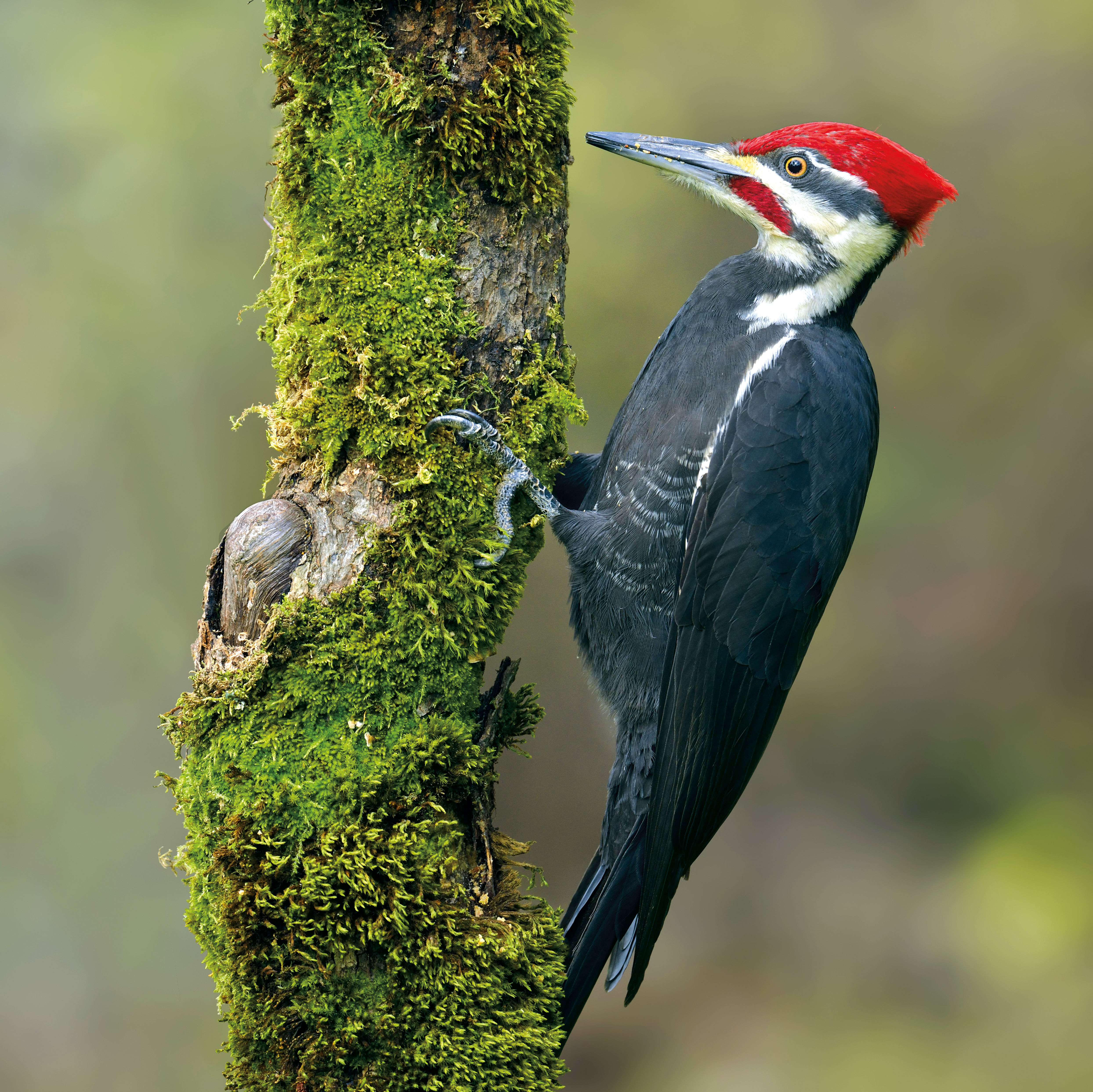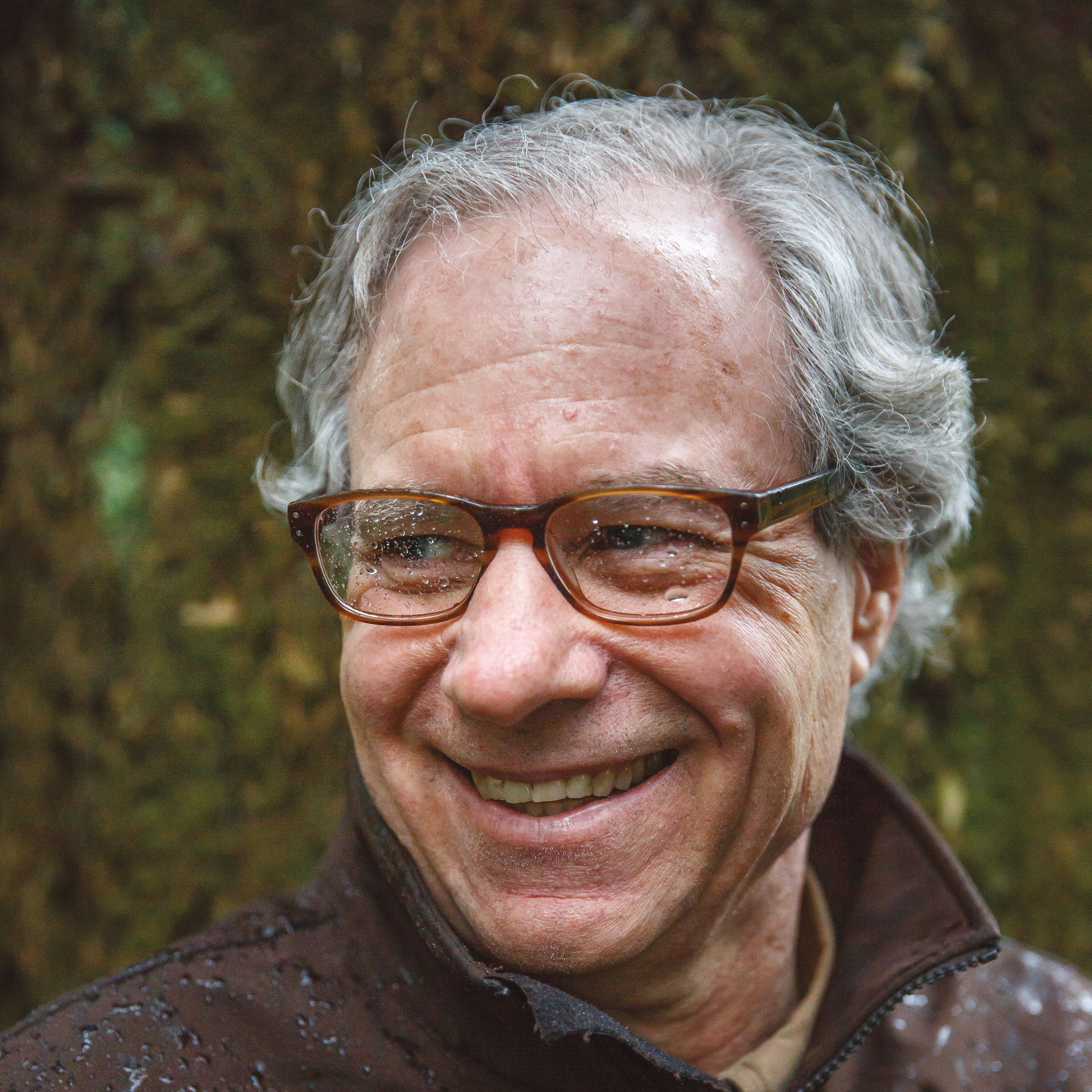Forest Park Is About to Change—For Better or Worse
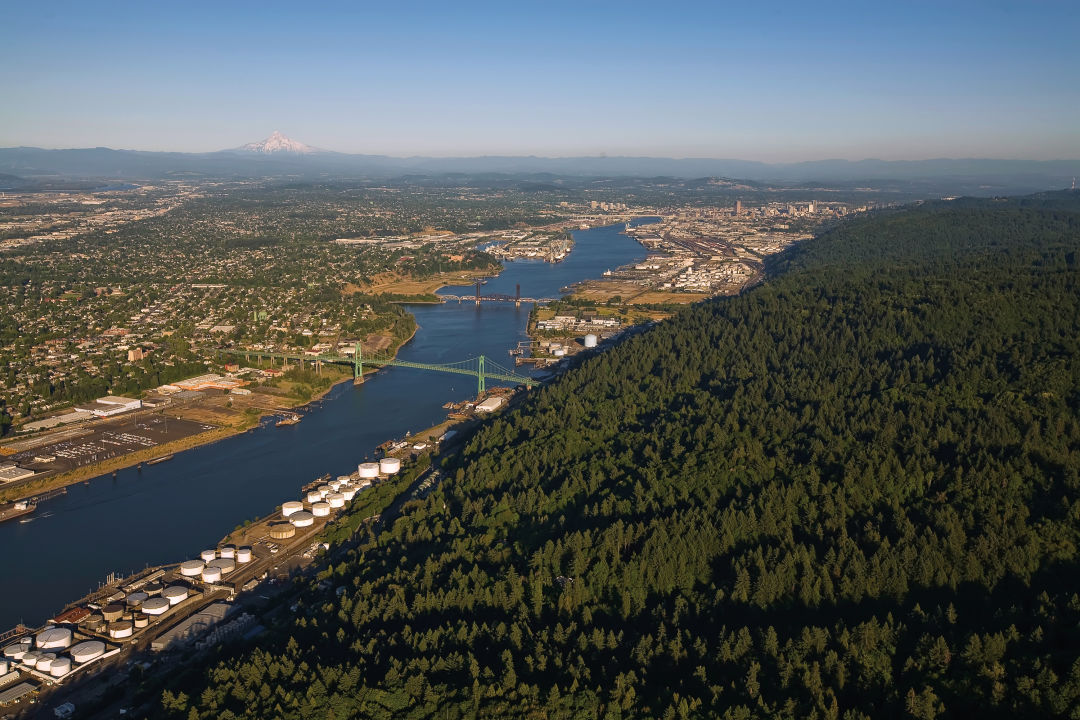
Aerial view from the north end of the park looking south
Image: Courtesy Scott Spiker
For more than 100 years, Portlanders have struggled to figure out how to “be” with the 5,000-plus-acre swath of woodland we know as Forest Park. In 1903, Thomas Lamb Eliot, the pioneer Unitarian minister who had a hand in many of the city’s great institutions, teamed with the mastermind landscape architects Olmsted Brothers to propose protecting this mass of green. Their initial vision of a virgin, untouched urban park was challenged in the ensuing decades. The Tualatin Mountain foothills became a major timber source (goodbye, old-growth forest!) and—until Leif Erickson Drive nearly washed away in 1915—a prospect for a major housing development. The woods didn’t become “Forest Park” until after World War II.
In different ways, the debate continues today, with new voices from a swelling population and political figures, each landing somewhere on the spectrum from radical environmentalist to outspoken recreationalist à la Portlandia’s Spyke. Shiny upgrades, a Yosemite-caliber visitors center, and a contentious firestorm over proposed policy changes are on the horizon. The one thing everyone can agree on? Forest Park, the country’s largest forested urban park, is worth fighting for. Here’s the battle plan.
1. Forest Park will find its center.
Forest Park doesn’t operate like any old park. It’s bound by an unusual land-use ordinance, canonized in 1995 by the city council (including then-commissioners Earl Blumenauer and Charlie Hales), that still governs its boundaries today.
The rule broadly sketched a vision for a park that would be well-maintained, monitored, and connected to the community. Various Forest Park steward organizations (there are at least 11) have worked to realize that manifesto for more than two decades. But it wasn’t until 2010 that the City Club of Portland called Portland Parks and Recreation to task for lackadaisical spending on Forest Park—less than 1 percent of the city’s then $99.5 million annual parks budget.
The bureau scrambled its jets, publishing a “Desired Future Condition” report in 2011, commissioning a recreational survey in 2012, and, in 2015, launching one of the park’s biggest fundraisers to date. The 20-year, $20 million Renew Forest Park campaign is a quantum leap for the park. Its ambition is three-pronged.
“This is a house with 22 back doors and no front door,” says bureau director Mike Abbaté. In other words, finding your way into Forest Park has never been easy. That’s the charge for Renew’s first decree, “Reconnect”: to build a visitors center, central trailhead, teaching space, and, critically, bathrooms. “Most people use the Lower Macleay and Thurman Street entrances, but we’ll often hear, ‘It feels like we’re coming in through someone’s backyard,’” says Britta Herwig, project manager for the visitors center. The proposed building, designed by local firm Dangermond Keane, would sit at the intersection of Highway 30 and NW Kittridge Avenue, in an industrial zone along the park’s eastern border. It’s tentatively set to break ground in fall 2018. The chief goal is to teach future generations about the importance of the park and its fragile ecosystem. Parking, a bicycle repair station, and a roving trailhead shuttle won’t hurt, either.
The Renew campaign’s other fixes address what’s already in the park. “Rebuild” aims to rehab aging infrastructure. That includes rotting wood bridges (the Maple Bridge has been out for five years) and collapsed culverts.
“Restore” resolves to tackle the park’s rampant invasive species problem. The Forest Park Conservancy is a major player in the effort, as it follows its own 2013 Greater Forest Park Conservation Initiative manifesto to refurbish the park and nearly 10,000 acres surrounding it. (A 200-acre restoration of Balch Creek enters its second phase this year.) Also in the hopper: the Pollinator Powerline Project, starting this fall, set to transform the weedy corridor controlled by the Bonneville Power Administration at the north end of the park into upland prairies and native grass meadows to attract honeybees, western kingbirds, and swallowtail butterflies.
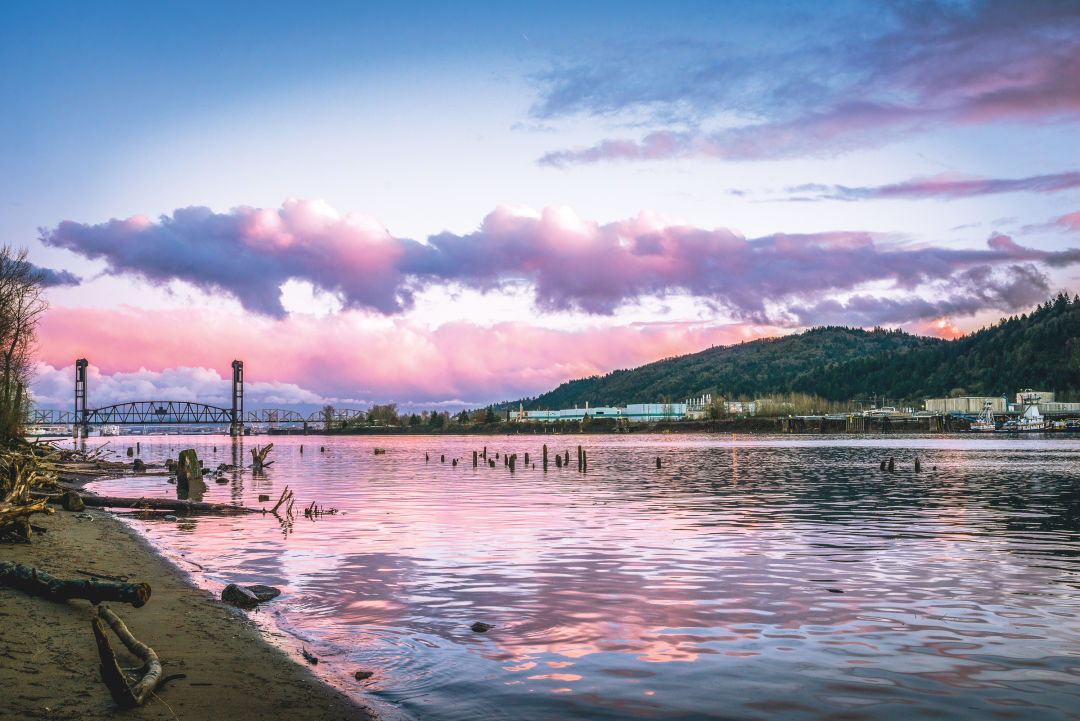
Looking southwest across the Willamette at sunset
Image: Courtesy Jarred Decker
2. The most dangerous street crossing will get a bridge.
“My first clear memory was my body colliding with the car. I was concussed, bleeding badly from my head and had many bruises—but amazingly no broken bones.” Kathy Ragain’s story isn’t uncommon at the crossing of the 30-mile Wildwood Trail at West Burnside, a dangerous strip where traffic zips around a blind corner at 45 miles an hour, on the order of 33 cars per minute. In 1996 the city identified the spot as a “tragedy waiting to happen,” but it wasn’t until 2015 that the nonprofit Portland Parks Foundation started raising money for a solution.
The proposed $2.5 million footbridge ($1.4 million has already been raised through private sources) is a Goldilocks compromise between installing a traffic light (too much congestion, not enough stopping distance), and a tunnel (too pricey, personal safety concerns). The arching 18-foot-high, 190-foot-long bridge, designed by Portland artist Ed Carpenter, is intended to mesh with the landscape, with etches of vine maple and sword fern in its bones. PPF executive director Jeff Anderson hopes for completion in the latter half of 2018. “I’d never aspired to build a bridge in my life,” he says, “but I’m quickly learning what it takes.”
3. Hikers will venture into the North Tualatin Mountains.
They sound like a misty, far-off Tolkien dream, but the North Tualatin Mountains are really a designation for the territories north of Forest Park, an offshoot of the greater Tualatin Mountains stretching eastward from the Oregon Coast Range. Metro bought 1,300 acres in four parcels with bond-measure funds in 1995 and 2006, with plans to protect and improve access to Burlington Creek, Ennis Creek, McCarthy Creek, and North Abbey Creek.
Think of these lands as a much-needed extension of Forest Park (although technically outside of park boundaries). Metro plans to start upgrades in 2018, first at Burlington Creek, an upland forest bordering the very-old-growth 40-acre Ancient Forest Preserve, where eight miles of trail are planned for hiking, off-road cycling, and equestrian use. McCarthy is next, pending funding, with nearly two miles of trail and a panorama of the Coast Range. Both sites will offer restrooms, trail networks, wayfinding signage, and parking lots, while the other two—North Abbey and Ennis—will remain primarily untouched for habitat restoration.
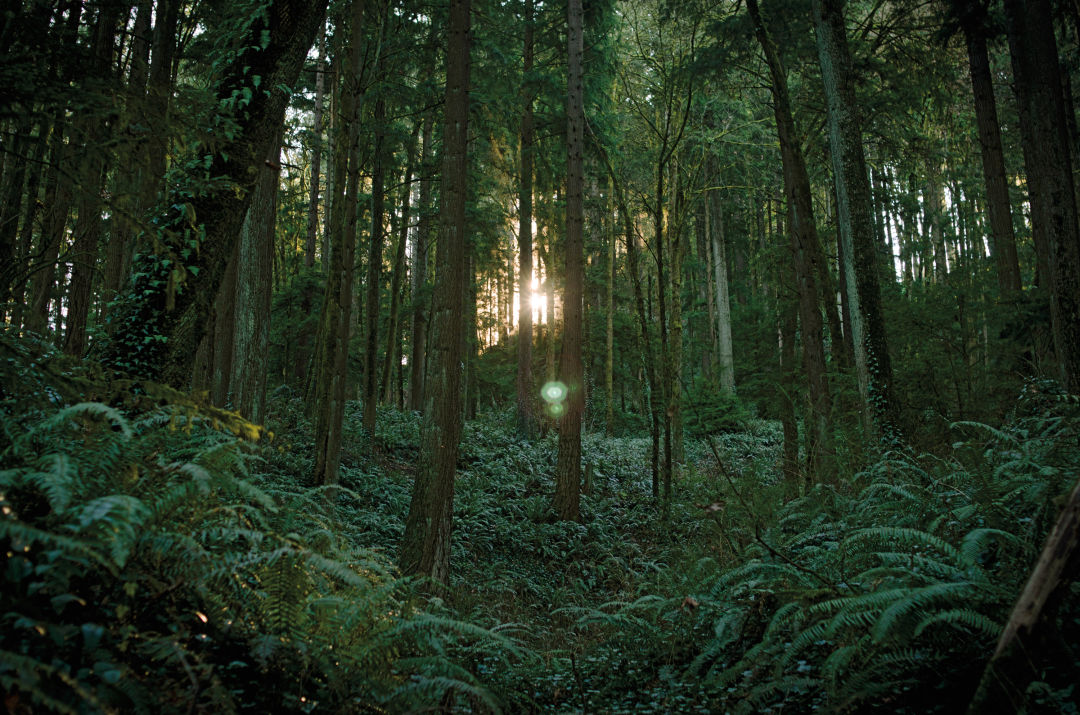
Forest Park is the country’s largest forested urban park.
4. Mountain bikes may change the landscape.
In the 21st century, no Forest Park issue has drawn more spitfire than mountain biking—the focus of near-sectarian debates between those who want more access for singletrack adventures and those who feel the sport could degrade the park. In 2010, a city-endorsed singletrack advisory committee made a big push for off-road cycling in the park that ultimately fell on deaf ears. The issue has remained charged—especially after 2015’s abrupt ban on mountain biking in Southwest Portland’s River View Natural Area, which had been one of Portland’s few urban fat-tire domains. Meanwhile, bikers have worked to navigate the bumpy politics (and perceptions) surrounding shared parkland access.
“Mountain biking has gone through an angsty adolescent period,” says Jocelyn Gaudi, an advocate for the Northwest Trail Alliance, which has led the battle for more access. “A lot of people narrow us into one specific segment of adrenaline-fueled, aggressive riders. We’re still working to change people’s ideas of what mountain biking in an urban environment is today.”
While there are technically 28 miles of bikable off-road trails in the park, many cyclists argue they aren’t suitable—that total includes hard gravel roads and precipitous firelanes that bomb straight downhill. “[Mountain bikers want access] for all the same reasons that people love Forest Park in general,” says Michelle Kunec-North, program coordinator for the Bureau of Planning and Sustainability. “It’s certainly the largest, and one of the only places with good city access, where you can ride a bike in a true natural setting, away from cars and development.” On the other side, conservationists worry about the effect of bicycles on the environment and trail systems; others fear fast-moving riders and blind corners. With tens of thousands of acres available in the metro area, they argue, why risk the city’s crown jewel?
A proposed master plan, formulated last year by BPS, blueprints off-road cycling all around the city, including sites like Mount Tabor and Powell Butte. But the vast majority of that plan lies within Forest Park. City council hopes to start grappling with the prototype’s many complications this summer—which is sure to provoke another round of fierce debate.
That battle will hinge on an old question: what is Forest Park for?
Marcy Cottrell Houle is Forest Park’s unofficial godmother. The 63-year-old wildlife biologist was raised just outside the park, in what is now U of O’s John Yeon Center for Architecture and the Landscape, and wrote the definitive 1988 guidebook One City’s Wilderness. Houle says that Forest Park’s distinctions—a true “interior forest” and more wildlife diversity than any other city park—are just a few reasons not to turn the park into a “Disneyland,” something she fears new recreational use would encourage.
“I would love for people, when they drive over the Fremont Bridge and see Tualatin Mountain, to not just think, ‘Oh, there’s another greenspace.’ I want them to say, ‘Wow, that is Forest Park, and that place is different than every city park in the country, and I’m proud.’”

